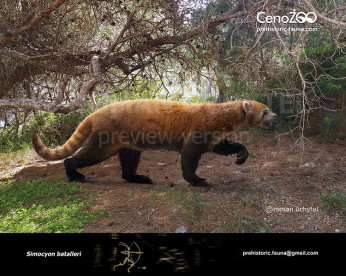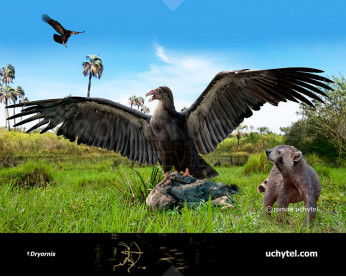Giant Raccoon (Chapalmalania altaefrontis)
116116Chapalmalania or giant raccoon (Chapalmalania Ameghino, 1908)
Order: Carnivora
Family: Procyonidae
Temporal range: during the Early Pliocene - Early Pleistocene (South America)
Dimensions: length - 1,3 m, height - 70 сm, weight - 20 -80 kg
A typical representative: Chapalmalania altaefrontis Ameghino, 1908
The remains of Chapalmalania were found in South America, in areas Chapalmal. Chapalmalania – a relative of raccoons (Procyonidae), who is so larger than all other known members of this family, that he first took for a bear. Sediments and chapalmalaliyas fauna show that the Pliocene there was a plain or pampas with rich grasslands, some woody vegetation and numerous streams. Rainfall was probably significant, but the climate was at least as warm as present-day climate of this region; it probably hasn’t had an impact of an approaching ice age.
Chapalmalania or giant raccoon (Chapalmalania Ameghino, 1908)
Order: Carnivora
Family: Procyonidae
Temporal range: during the Early Pliocene - Early Pleistocene (South America)
Dimensions: length - 1,3 m, height - 70 сm, weight - 20 -80 kg
A typical representative: Chapalmalania altaefrontis Ameghino, 1908
The remains of Chapalmalania were found in South America, in areas Chapalmal. Chapalmalania – a relative of raccoons (Procyonidae), who is so larger than all other known members of this family, that he first took for a bear. Sediments and chapalmalaliyas fauna show that the Pliocene there was a plain or pampas with rich grasslands, some woody vegetation and numerous streams. Rainfall was probably significant, but the climate was at least as warm as present-day climate of this region; it probably hasn’t had an impact of an approaching ice age.

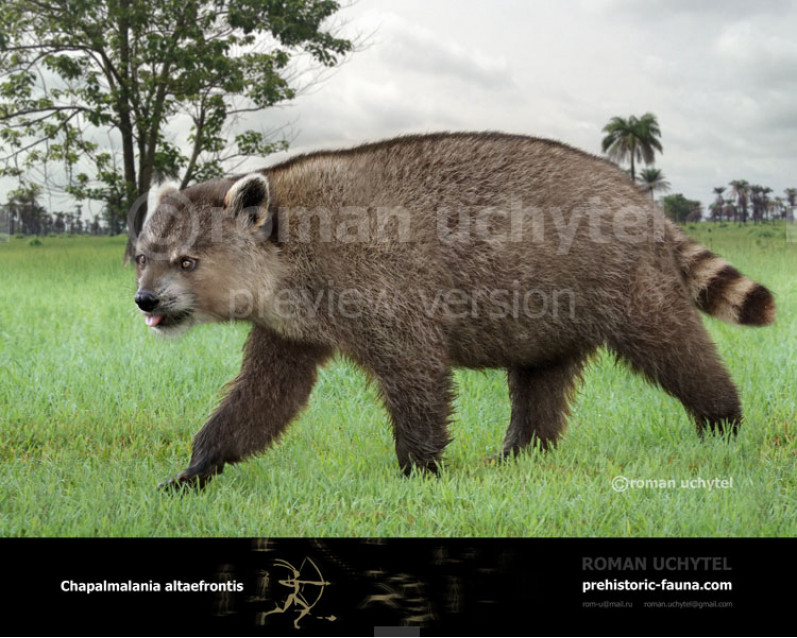
-797x638.jpg)
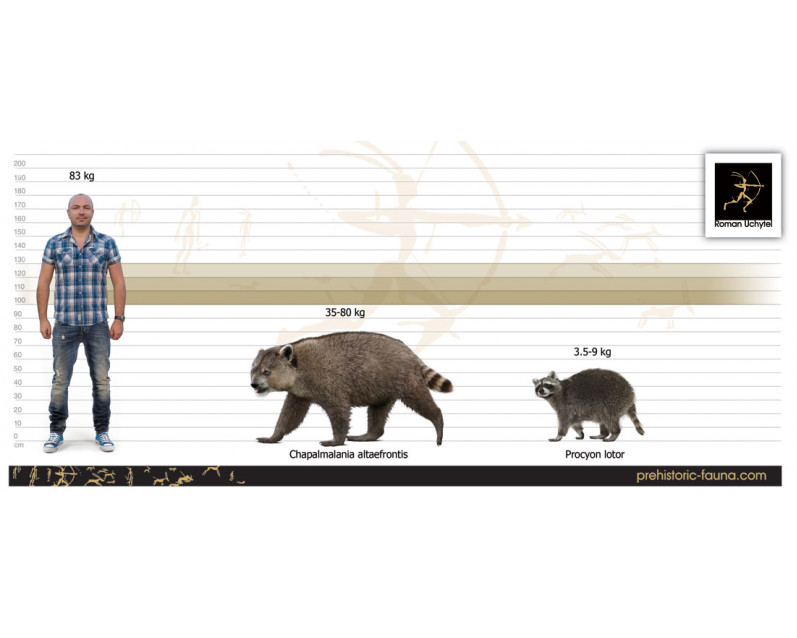

-70x56.jpg)

-346x277.jpg)
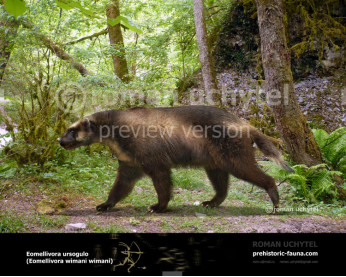
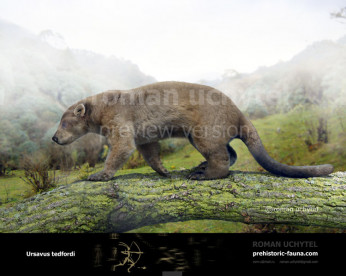
-346x277.jpg)
